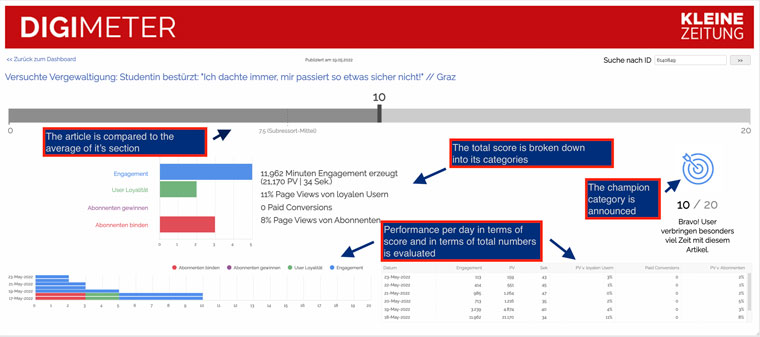
Newsletter
Newsletter
Find out why publishers have found out that less data can be more powerful and how publishers are distilling data to find insights.
9th March 2023

In the Pugpig weekly media bulletin, Pugpig’s consulting services director Kevin Anderson and digital growth consultant James Kember distills some of the best strategies and tactics that are driving growth in audiences, revenue and innovation at media businesses around the world.
Publishers are not lacking data, but many are still hungry for insights. Anna Pöltl, data analyst with Austria’s Kleine Zeitung, speaks to the challenges of “doing our best to satisfy the appetite for data within the newsroom” in a piece for INMA. However, this isn’t simply about the volume of numbers but how actionable those numbers are, and for the last two years, they have been refining their approach to create a KPI that communicates to their stakeholders what content is successful. Thus began their quest for “one KPI to rule them all”.
Sign up to get the Media Bulletin in your inbox.
Their starting point will instantly be familiar to anyone analysing numbers to try to determine the performance of content. They had been using a mix of metrics including page views, comments and users to try to measure content success. They weren’t satisfied with this mix for a number of reasons. Instead of comparing several metrics, they combined them, creating a derived metric made up of “several behavioural and conversion metrics”.
It’s consistent with the the experience of other publishers that have found that too many metrics can dilute their effectiveness. When the Financial Times first launched a metrics dashboard, it “struggled to gain more than a small cult following”, and the newspaper realised that “…journalists simply do not have the time to wade through hundreds of data points to find insights. So when it comes to metrics, less is more (and the more actionable the better).”
That begs the question of which metrics to include. The data team at Kleine Zeitung filtered their metrics through the lens of their four key strategic goals: engage readers, increase loyalty, generate subscriptions and retain subscribers. This led them to focus on measuring:
Their derived metric ranked each piece of content on a scale of 20, with each of the four goals contributing up to five points. This data feeds into a dashboard that shows the performance of the piece of content with its overall score, its score on each of the four goals and the performance in relation to other content in its section.

It’s a start, but Pöltl says that their work isn’t done even after two years of development. As with any product, they continue to take feedback from stakeholders and continue to refine their data model and the Digimeter.
The value of encouraging loyalty and engagement as a driver for subscription, revenue and retention is well understood by publishers. The clients we work with use a host of tools to achieve this, including product strategy, active app engagement, content optimisation, personalisation and audience segmentation. One of the keys to success is building an audience based strategy that focuses on specific cohorts. Within this, Mark Zohar from Viafoura has highlighted the importance of one particular segment of super engaged users – the User Generated Content (UGC) contributor.
Zohar defines a UGC contributor as a user who actively engages with a publisher’s brand by leaving comments, asking questions in a Q&A or following topics to personalise their experience. Broadly speaking, they’re publishers’ super fans.
As a digital experience company, Viafoura has access to lots of anonymous user data through their engagement and personalisation solutions. They’ve compared UGC contributors to registered non-contributors across three key metrics: number of visits per month per unique, total number of page views and average time per visit.
By mapping each of these out, they’ve been able to conclude that UGC contributes are:
This presents publishers with a clear opportunity: drive users to actively engage and participate. This increases habit and loyalty that drives subscription growth. At Pugpig Consulting we suggest taking a two pronged approach to this. Firstly, focus on identifying the tools, features, surveys, blogs or content that users are already commenting on or contributing to. Where there is little engagement or the opportunity doesn’t exist, explore running some simple tests to figure out what the specific audience is interested in. Secondly, focus on those users that are most likely to participate and put in place a comprehensive contact strategy to highlight the opportunity to participate.
Pugpig’s Consulting Services team is helping our publishing partners to develop advanced audience strategies that encourage users to build habit and loyalty with publishers’ products, leading to subscription and revenue growth. We are also developing custom data reporting tailored to the strategic goals of our clients. If you would like to discuss how we can help you, contact us at info@pugpig.com.
Here are some of the most important headlines about the business of news and publishing as well as strategies and tactics in product management, analytics and audience engagement.

Newsletter

Newsletter

Newsletter

Newsletter

Newsletter